No noise and dust. Part-2
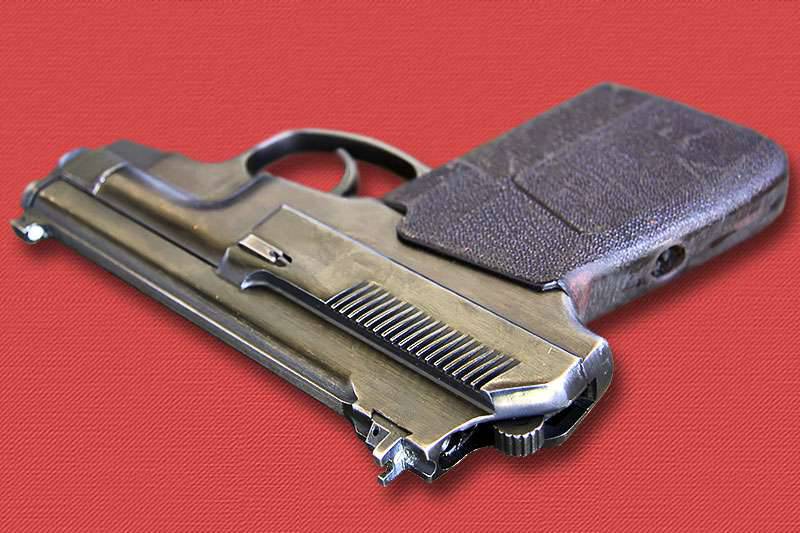
As mentioned in the previous part, the need to create an automatic self-loading pistol was obvious, and in 1971-1972. the search for technical solutions was continued by the designers of TsNIITOCHMASH (46 department), in parallel with the specialists of the research and development structures of the special services. It was clear that we would have to develop both a new cartridge, a different design, and a non-standard design pistol, since the known automation schemes were not suitable. And new, reassuring solutions and design schemes weapons and patron were found! In other words, such results are called inventions.
Based on these results, the Vul research project was included in the thematic plan of the TSIITOCHMASH for 1973, the purpose of which was to study the optimal parameters of the self-loading rifle pistol complex for silent shooting based on the cartridge with the cut-off of powder gases in the sleeve.
Petrov Viktor Alekseevich (by patron) and Yuri Krylov (by arms), Kornilov Elena Sergeevna - responsible for developing the technology of manufacturing the liner were appointed responsible performers.
The terms of reference provided for the creation of a new 5,6 caliber cartridge ... 7,62-mm with a bullet muzzle energy 1,5 times higher than that of the SP-3 and a compact self-loading pistol weighing no more than 600 grams. With the presentation of higher requirements for range, accuracy and penetration of action than for existing cartridges. And in November 1974, the TZ was even more “clarified” - now the task was to punch a bullet-proof vest like 6B1 when firing a pistol at a distance of 25 m. Despite the fact that a preliminary analysis of the possibility of breaking through the 6-mm plates of the bulletproof vest 6Б1 showed that none of the pistol complexes that were in service at that time in the Soviet and in foreign armies, were not capable of this.
Since the Customers had previously concentrated their research mainly in the caliber 5 ... 5,6-mm, the work on the Vul R & D project contained quite a lot of research on the development of structures in these calibers, especially in the early stages. In one of the variants, the “rolling” 5,2-caliber bullet of 5,78 grams with a VNM hard alloy core and a thick-walled sheath of 50 steel hardened to HRC 37… 42 hardness should have provided the required level of penetration at the initial speed of 250 m / s. The name “knurled” bullet received because on its outer surface by the method of knurling a very frequent sloping screw “cutting” of a triangular shape was performed. Before assembling the cartridge, the bullet was pressed into a cylindrical brass insert, forming corresponding grooves on its inner surface. A brass liner with a bullet was inserted into the cartridge case and when fired it served as a barrel, giving the bullet rotation. At the same time, the barrel of a pistol (or other weapon) would be smooth and intended only for directing a bullet. Such “delights” of the cartridge's construction were explained, first of all, by the desire to find a way to give the bullet the required rotation “bypassing” the rifled barrel, because I really wanted to get rid of the ejector rod. As well as the desire to maximally simplify the design of a self-loading pistol, “untie” the influence of a bullet on the operation of its automation when driving a bullet along a rifled barrel, and also the desire to create an “cartridge-independent” design of the cartridge.
However, as a result of the experiments, it was found that this design is not optimal. In addition to its obviously high complexity and non-manufacturability, serious problems were obtained with accuracy, high residual pressure of powder gases, and difficult extraction of spent cartridges. According to the results of the research, it was concluded that the design of the chuck with a knurled bullet is unacceptable for mass production and is suitable only for manufacturing in small quantities. Also, although 100-% penetration of the 6-mm plate of the 6B1 vest and 25-mm pine board behind it at a distance of 25 m was ensured by 1,3 - 1,6 times the inferior bullet of the SP-3 cartridge (by the area of the full SP-2 bullet) ) and 9 times - bullets XNUMX-mm cartridge for Makarov pistol.
The design of cartridges with a two-element 5,45-mm bullet with “bare” steel or heavy tungsten cores was also worked out and investigated in detail. An interesting way to compensate for the extremely small (0,10 - 0,13 kgf · s) recoil momentum of such a cartridge. In the pulley part of the liner there was a sleeve (called “automation sleeve”), which could move, more precisely move out of the cartridge socket under the action of the pallet when it was braked by about 2 mm beyond the envelope of the cartridge. That should reliably provide the movable parts of the automatic pistol needed for the extraction of spent cartridges and reloading the new cartridge energy. Those interested in the details of these options can refer to the third book of the monograph by V.N. Dvoryaninova "Small arms ammunition».
Active research into the design of the future of the new cartridge in small calibers (5 ... 5,5-mm) continued until the 1977 year. However, the results of research obtained in practice and their objective analysis led Customers to the need to adjust the terms of reference for the future pistol complex. The interdepartmental commission, which accepted the next stage of the Vul research and development project, recommended to continue research on the development, specifying the requirements for the slaughter effect of the bullet and for breaking through various obstacles (they refused the requirement to break through the body armor 6B1), as well as for the mass-dimensional requirements for the pistol (weight without magazine - no more than 750 g; dimensions - no more than 165 x 115 x 32 mm). The caliber of the bullet was set to "no more than 7,62-mm."
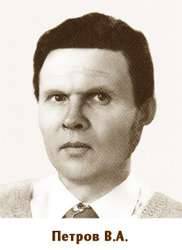
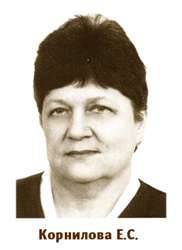
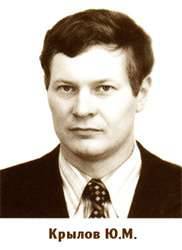
Not least, the reason for the adjustment of requirements was their streamlining in connection with the research on the development of a unified system of silent small arms that began at that time, which allowed not only to “put things in order” among the separate samples of special weapons and the directions of their development, but also to substantiate class of such weapons. A little further we will return to this work.
Based on the requirements specified in 1977, the future cartridge was redesigned to take into account all the accumulated experience and results. To increase the slaughter effect of the bullet, it was decided to return to the caliber 7,62 mm - the limit for TK. The weight and initial velocity of the bullet was chosen, including, taking into account the magnitude of the recoil momentum of the cartridge, of the order of 0,20 kgf · s, necessary to ensure the operation of the automatic pistol without using the automation sleeve in the cartridge.
Carefully considering today the design of the cartridge SP-4, created as a result, its originality and uniqueness are not immediately obvious. The cartridge is significantly different in its design from its predecessors and "heaped up" experimental options. The design team, mainly V. Petrov, managed to solve many large and small problems inherent in the combat cartridge with a cut-off of powder gases in the sleeve, already described above in the history of the creation and testing of such cartridges.
Using all the experience accumulated by this time by domestic cartridge manufacturers, Viktor Alekseevich went much further than them in almost every element of his patron.
The design of the primer assembly has changed - the self-capturing primer-igniter KV-9-1, modified in sensitivity, was used, which was mounted in the liner case with additional corenation. The photo clearly shows his “work”. The bullet became steel and changed its shape. A brass lead belt in front appeared on the bullet for tracking along the barrel bore. The diameter of the "body" of the bullet does not exceed the diameter of the barrel in the fields of the rifling. Both the shape of the bullet-pushed pallet and the process of its braking in the liner sleeve have changed. The sleeve itself has become noticeably thicker. Comparing the appearance of the cartridge before and after the shot (in the photo - the left and right, respectively), it can be seen that the cartridge sleeve of the SP-4 cartridge does not undergo such drastic plastic deformations as in the SP-2 and SP-3 cartridges.
When firing two sheets of 20 steel 1 mm thick, separated by 35 mm and 25-mm dry pine plank behind them at a distance of 10 cm, SP-4 cartridges provide 100- break through both steel sheets at a distance of 50 m; 90-% penetration and two steel sheets and boards on 25 m and 60-% penetration - on 50 m. SP-4 bullet also provides 100-% penetration on 25 meters 5-mm sheet of aluminum alloy AMg6, and bullets of SP- 3 and 9х18 PM do not break through this barrier.
During the development of the new cartridge, the designers found and tested up to the required reliability of military weapons both original technical and technological solutions. Therefore, quite deservedly, many consider that the cartridge SP-4 is the highlight of the silent pistol complex.
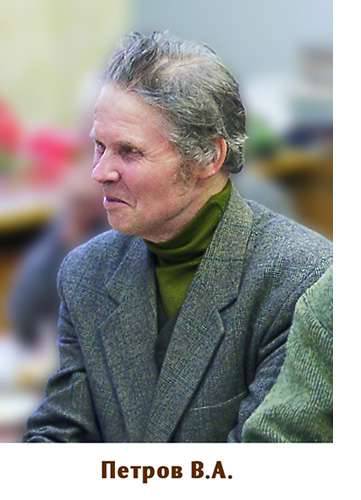
In the "ordinary life" Viktor Alekseevich Petrov has always remained a simple, kind and not stingy person. To the banal question “How are you?”, He invariably answered with the words of V.S. Vysotsky "Drives losers around the world with a knapsack, life flows between the fingers with a thin web ...". The external “simplicity” that he used could be confusing only for the first time. Colleagues and friends knew his highest literacy, erudition and decency. The only thing he did not tolerate was obstinacy (especially in the absence of necessary knowledge of the topic) and the inability to adequately evaluate objective criticism in disputes and discussions. “Alekseich,” as he was called among friends and at work, never complained about his fate and was always ready to help. His work activity is fully connected with the city of Klimovsky, Moscow Region and TsNIITOCHMASH, where he first entered pre-diploma practice in 1960, and already in 1961, he was accepted into permanent employment in the cartridge department No. XXUMX, at the end of the Leningrad Military Mechanical Institute. With the formation of a special department No. 23 in TsNIITOCHMASH, he moved there to the group of cartridge owners, where he worked until his release on a well-deserved rest. On the creative account of Viktor Alekseevich is not only the cartridge SP-46, although he is the most famous of his work, adopted for service. For the development of this patron, V. Petrov, among others, was awarded the State Prize of the Russian Federation in 4. Viktor Alekseevich Petrov passed away on January 1993 2 of the year. And today, examining one of the results of his work, we can, with due respect, appreciate his design talent. Blessed memory, Viktor Alekseevich!
As mentioned above, the design of the cartridge SP-4 and the choice of its basic technical characteristics, took into account the requirements of gunsmiths for the recoil momentum for their ability to create an automatic (self-loading) weapon. It is worth recalling that up to this point self-loading samples for cartridge with a cut-off of powder gases in the sleeve has not been created.
It is wrong to think that only the provision of a sufficient recoil impulse (on the order of 0,20 kgf · s) and the absence in the design of a new cartridge of a stem-pallet sleeve that is moving beyond the envelope solved all problems “automatically”. There were other, very unpleasant "little things".
Since there are no other sources of energy other than recoil for automatics, only pistol recoil schemes, in general, were suitable for the operation of the pistol. At the time of braking of the pallet on the cartridge case, inevitably, a dynamic impact was obtained, hindering the movement of the moving parts of the automatic pistol. Moreover, both the fact of a dynamic shock pulse and its not guaranteed uniformity (stability) from shot to shot were unpleasant, especially in different operating conditions. The beginning of the movement of the bolt group simultaneously with the movement of the bullet, in accordance with the understandable laws of physics, inevitably led to the beginning of the extraction of the cartridge case from the “early-time” chamber. In this case, the deceleration of the pallet occurs at the time when the liner of the cartridge has moved away from the end of the chamber and does not have the required support. And without such a support, the liner should have significantly thicker walls to ensure its strength both in the longitudinal (break) and radial (blow-up) directions. That, of course, is not permissible and can spoil the whole idea due to a significant increase in the weight and size of the cartridge. Forced delay (locking) of the bolt group to synchronize the rollback start time with the end of the pallet braking also led to a significant complication of the design and, as a result, its general inapplicability to military weapons. It was these puzzles that did not allow earlier the possibility of constructing an acceptable design of a self-loading pistol for a cartridge with a cut-off of powder gases in the sleeve.
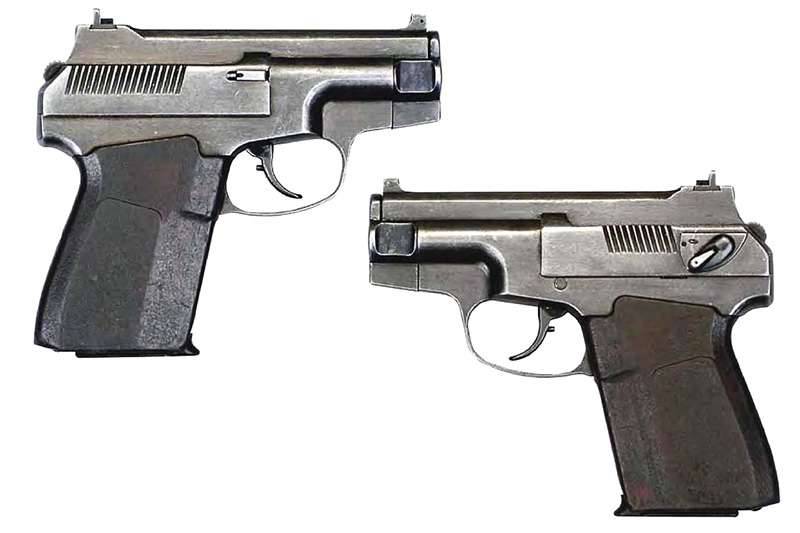
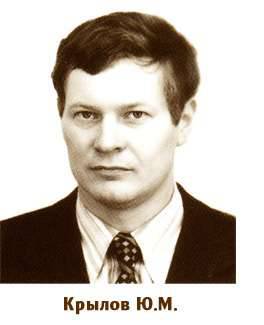
But talented gunsmith designer Yuri Krylov found an original way out! The “golden key” of the pistol design was a movable valve and chamber, but structurally divided into two independent parts, each of which has its own return spring.
This solution allowed us to implement the following scheme for the operation of the MSS pistol: Before firing, the cartridge was sent to the chamber, fixing in it with the sleeve of the cartridge. At the same time, the chamber is tightly pressed against the hemp of the trunk with its return spring. The shutter rests against its mirror in the bottom of the liner, choosing a mirror gap, and the groove of the liner is under the extractor tooth. In this case, the shutter is not adjacent to the chamber, between them remains a guaranteed gap.
When fired, simultaneously with the beginning of the bullet movement, both the chamber and the bolt begin to roll as a whole, since the sleeve “burst” within the framework of the elastic deformation by pressure of powder gases (Pmax. Cf. 2750 kgf / cm2) is trapped in the chamber and remains immovable relative to it, that is, the end and the slope of the sleeve do not move away from the front end of the chamber and have the necessary "support" on its part. Having passed its way in the sleeve and having dispersed the bullet to the required speed, the pallet is braked in the end part of the sleeve, cutting off the powder gases in its body. The dynamic impact from braking the pallet is transmitted through the case body of the chamber, inhibiting its movement back. At the same time, the chamber does not completely stop, but it is significantly inhibited and takes on itself all the dynamic effects. The shutter, which is not mechanically connected with the chamber, is inertia continuing its movement backward with the speed (impulse) acquired by this moment. The chamber, after passing a certain path in 8 mm (which guarantees that the pan has already slowed down), stops abruptly, resting on a special stop on the frame of the gun (marked in red in the figure below), after which it returns to its original position under the action of its own return spring .
The shutter, as already mentioned, continues to roll back, holding the cartridge case by the extractor by the groove, eventually pulling it out of the chamber. The pressure of the powder gases in the sleeve at this moment is already significantly less than the maximum and the sleeve is not pinched in the chamber. It should be noted that in detailed studies, carefully examining the high-speed shots of the shooting process under various operating conditions, it turned out that deviations from the “ideal” model of the pistol operation described above occur. Sometimes the sleeve does not “get stuck” in the chamber and begins to go out of it with the shutter, and the chamber remains in place. But this does not lead to any fatal consequences for the cartridge or to delays in the operation of the pistol. In other cases, the sleeve so significantly "sits" in the chamber, that the chamber with the sleeve continues its movement back along with the shutter until it stops on the stopper. In this case, a normal extraction of the spent cartridge case also takes place, as if “with a hammer”, and there are no delays in the operation of the pistol or problems with the sleeve. So this elegant technical solution managed to solve the standard “riddles” - to ensure reliable operation of the automatic pistol, which could not be done before.
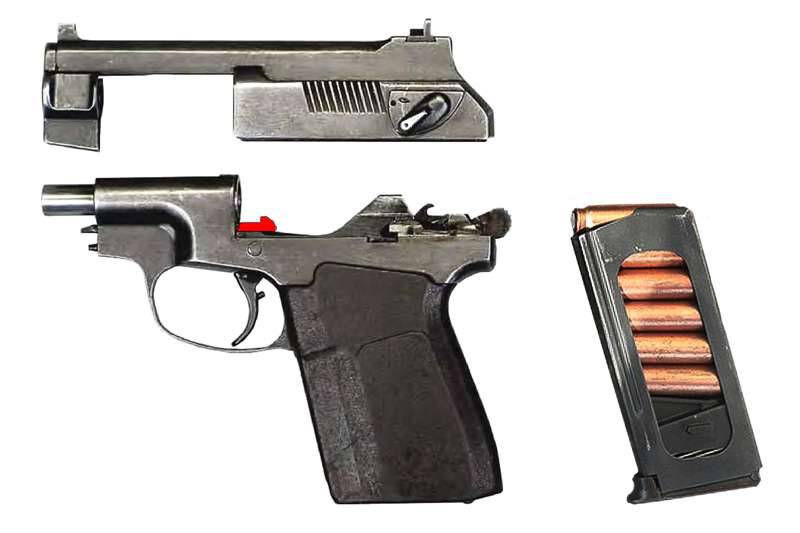
The remaining elements of the MSS pistol design are less original, their functioning and function are similar to those of other pistols. The trigger mechanism is completely borrowed from the PM, the magazine on 6 cartridges differs in that the cartridges in it are located at a certain angle due to the long length of the cartridge SP-4 and the need to provide a comfortable grip on the handle of the gun.
But the mobility of the chamber and the presence of its own return spring could be used again during one shot cycle: at the end of the rollback, the chamber is already in its original position, pressed against the stem of the barrel, and the sleeve is already removed from the chamber. The shutter, completing its rollback, picks up the corresponding chamber and engages it again in a joint rollback, compressing its return spring (the second time in the same shot :-) As a result, the shutter braking at the end of the rollback occurs more smoothly and unstressed than it could would.
The gun practically does not emit a “clanging” sound of moving parts when fired, and the main source is, as before, the sound of expanding powder gases due to their breakthrough between the walls of the sleeve and the tray. This is also evidenced by the obvious fact that the sound of the shot from the MSS and HPC-2 is almost the same, but the HPC-2 has no moving parts of automation at all. The general impression about the “noiselessness” of the LDC-2 and SP4-PSS is usually described as the average between clapping hands and the sound of a shot from a conventional, unworn air rifle.
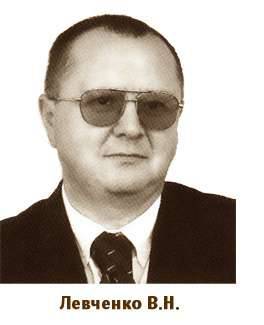
The main technical solutions incorporated in the design of the MSS were developed by Yu.M. Krylov, who, unfortunately, passed away early in the prime of his creative power and could not finish the work on his brainchild. The development and revision of the pistol at the ROC stage was carried out by Viktor Nikolaevich Levchenko.
Almost in all descriptions of the operation of the MSS automatic equipment (as well as in the description of the RF patent on it) it is indicated that the movable chamber allows to avoid the formation of a vacuum behind the bullet and, accordingly, the formation of sound from the cotton when it leaves the bore. According to some "authors", this is the main reason for the presence of a movable chamber in the design of the gun! The original source of such misconceptions was mentioned above and it is only regrettable that this statement has firmly established itself since then in the theory of silent ammunition and leaked into the applications for inventions and popular scientific literature. In fact, due to the inevitable gas breakthrough between the moving pallet and the liner walls, there is always excessive (increased) pressure behind the bullet of the SP-4 cartridge in the MSS barrel. To create in practice an absolutely hermetic construction in this sense is not possible, especially in the conditions of mass production.
Another common and not entirely correct statement says that spent cartridges from SP-4 are dangerous immediately after use and for some time after the shot due to the high residual pressure in the sleeve. This opinion has its origins, most likely because of the usual caution, based on the experience of using previous generations of cartridges, SP-2 and SP-3. Since they had a thin-walled sleeve, not a self-sealing capsule, and indeed could give surprises when they were immediately removed from the chamber. Therefore, such a danger was deliberately indicated, although it was practically not observed due to the fact that it took a long time to extract a spent cartridge from LDCs or SMEs ... But the cartridge SP-4 has a much thicker cartridge case, the capsule assembly is refined and no spontaneous breaks of the spent cartridges or loss of caps is not observed and is not allowed. After ejecting a pistol from a pistol, the cartridge case is noticeably hot, and this is indeed a dangerous factor — you can easily burn your hand if you grab recently spent cartridge cases with your bare hand. Interestingly, there is a small trick-surprise here. Immediately after the bullet took off and a few more seconds after the shot, the body of the cartridge case remains cold, since it takes some time to heat the walls of the cartridge case with hot powder gases. At the same time, the residual pressure in the sleeve immediately at the end of the deceleration of the pallet is about 1000 kgf / cm2, but decreases very quickly and stabilizes at the level of 500-530 kg / cm2 due to the transfer of heat to the sleeve and the discharge of powder gases.
Rifle sleeves continue to “hiss” for quite a long time, slowly releasing the remaining powder gases, spoiling the air and mood of the warehouse workers, if they took such sleeves “for report”. Therefore, when conducting test and training firing, the spent cartridges from the SP-4 before passing into the report are punctured by an elementary device, similar to a large hole punch with a sharp spike.
Returning to stories working out of the whole complex, we note that the complex RG040 consisting of 7,62-mm cartridge RG020 (-4 SP) and the self-loading RG021 gun (MSS 6P24 index) has been fully worked out, "Wool" by OCD in 1979 - 83 years and 1984 year adopted by the special forces of the KGB of the USSR, and in the 1985 year, under the symbol 6P28, army special forces. In addition to this, in 1986, the NRS-2 reconnaissance knife, an upgraded version of the LDCs chambered for SP-4, was adopted for service with the knife of the scout.
State tests of the pistol complex, conducted in 1983 year, showed that it fully complies with the requirements of the TOR:
1. In terms of accuracy of the PSS pistol shooting on 25 and 50 m (sitting up and standing), the new complex is equivalent to an 6P9 pistol chambered for 9x18-mm PM and an SME pistol for SP-3 chuck.
2. By piercing action, it is equivalent to a 6P9 pistol and in 2 - 3 times the SMP pistol.
3. The slaughter effect of the bullet when shooting at 25 is almost equivalent to the AKM machine gun with CBE chambered “US” and is 1,8 times as large as the SME pistol in the largest area of the lesion area in the mastic target.
The main TTX pistol MSS:
• Weight with equipped magazine - 0,85 kg, with magazine without cartridges - 0,7 kg;
• Length - 165 mm;
• Sighting range - 50 m;
• Initial bullet speed - 200 m / s;
• The diameter of the dispersion of bullets at a distance of 25 m - no more than 15, see.
As you can see, having significantly smaller dimensions, greater comfort of wearing and using than a silent pistol PB (6P9) with a classic expansion silencer chambered for 9х18-mm PM, the new complex was not inferior to it in terms of combat characteristics, surpassing the bullet. And also significantly superior to its other predecessors in all respects. It is effective, reliable and fully meets the requirements for it.
The requirements for the domestic pistol complex for silent shooting and its uniqueness should be discussed separately.
As mentioned above, at the end of 70-s, an extensive research and analytical R & D was conducted to develop a unified concept of the national system of silent weapons. Its goal was not only to develop and substantiate the tactical and technical requirements for different elements of the system, but also to justify the composition of the system itself, that is, its elements, because before that time various special departments had different points of view on this matter and, accordingly, the development of special weapons and ammunition were scattered and chaotic.
After conducting a comprehensive analysis of the possible options for the use of special weapons - from “very peculiar” tasks to military operations and law enforcement scenarios, four elements of the future system were identified - a pistol, a sniper rifle, an automatic rifle and a rocket launcher. For each of them, their requirements were developed and substantiated on the basis of the tasks to be solved, which “did not overlap” each other and did not suffer from the eternal desire to get everything at once in one miniature thing. It was possible to streamline the future system, unify the cartridges and reduce the overall product range, eliminating duplication and costly exclusives.
In addition, based on the experience of combat use and theoretically calculated scenarios, it was shown that the use of special weapons with the proposed level of technical characteristics for range and accuracy of firing, the degree of silencing of the shot, penetration and destructive action of bullets will significantly improve the effectiveness of such operations. Including the "work" of the army special forces, law enforcement agencies, various kinds of special services and units.
Unfortunately, modern reality has given a very large number of examples of practical confirmation of the correctness of the conclusions and decisions made at that time. The numerous results of the real use of domestic special weapons speak for themselves. Silent weapons, which, for understandable cinematic and detective reasons, were previously associated exclusively with espionage and “very special” operations, have now found much broader application. Vintorez and Val are, of course, more popular and famous.
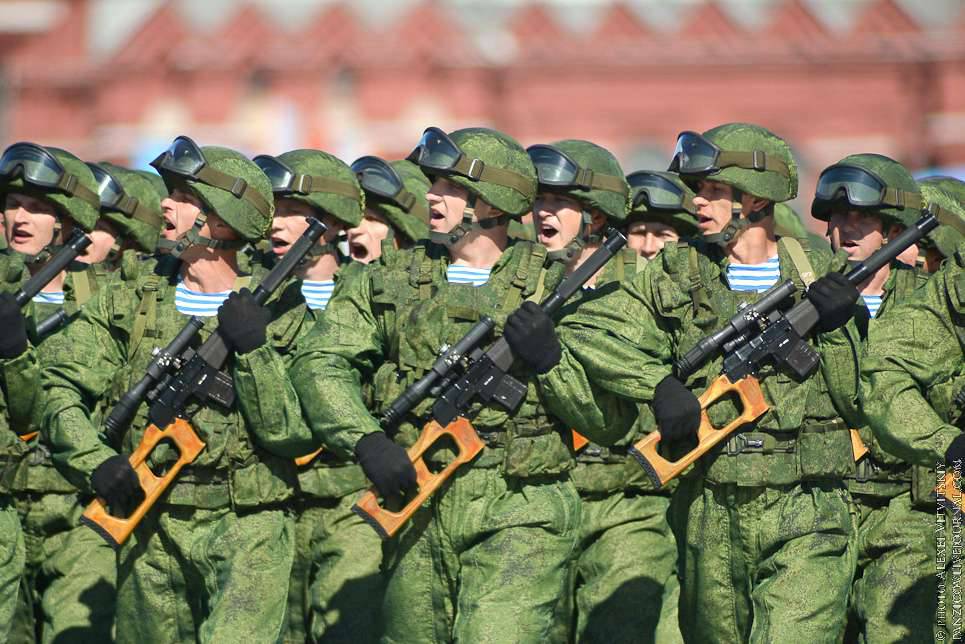
But the PSS also occupies an important place in the system. Silent self-loading pistol complex, for example, is indispensable for the protection of public order. Because the crash of shooting is the weapon of intruders seeking to sow as much panic and fear as possible. But the quiet and timely elimination of such a threat, without attracting too much attention and panic, is a matter of law enforcement, special services and special weapons.
Therefore, answering the question about the reasons for the absence of foreign analogues in the MSS, first of all, it should be said that in other countries there is no such concept and an integrated system of special weapons with reasonable technical requirements and methods of its use. And only in the second place - purely technical and design reasons.
Those who know the subject matter usually object that today there are and there are many foreign patents on this account from different periods, including cartridges with a cut-off of powder gases in the sleeve. In this regard, it should be noted that the presence of a patent is in no way equivalent to a finished, comprehensively tested and adopted product. Moreover, many beautiful ideas protected by patents do not withstand, as a result, testing practice and actual production. Moreover, it is not always possible to even simply repeat a known construction or principle.
This statement is very clearly illustrated by the following story, which Viktor Alekseevich Petrov loved very much. In his words, the situation was as follows: Around the 1991-92 year, most likely from the Transnistrian region, the Israeli intelligence services received two MSS and 24 pistols for the SP-4 cartridge for them. At that time, these samples of special weapons were not yet “revealed” and are known to foreign specialists. After conducting a detailed study of the combat and tactical characteristics of the complex, the Israeli experts who know a lot about their business were impressed with them a lot and concluded: the complex is so good that it is very, very desirable to have something like that on board. A unique case - it was decided to repeat the design of the pistol and cartridges, having mastered their own production, regardless of the costs. They hooked up the designers and production workers, allocated funding. Started with a gun. They made the most accurate copy of the PSS and checked it with several shots - it seems to work. Of course, with a small number of experienced firing it was obvious that “everything is not so simple” and the main problems await them ahead, especially in difficult operating conditions. We took care of the release of cartridges. The local manufacturer, having familiarized himself with the task and design, enthusiastically took up this order, marking the availability period around the month of 3. However, not through 3, not through 9 months the result was not achieved. Something all the time did not work and the cartridges refused to function stably and correctly even in normal conditions, from a “native” pistol. Then the Customers turned to the "friendly" company in Italy with the same task - to launch the release of an analogue of the joint venture 4. Italians marked the availability period in 4-6 months and assured Customers of a positive result. However, after two years, they also failed to complete the task ...
From 1990 to 2000, the director of TsNIITOCHMASH was A.V. Hinikadze. Those were very hard times for the defense industry, especially for research institutes. Alexander Valeryanovich, including in the search for the survival of the institute, was one of the initiators of an unprecedented policy of openness. It was during his time that the World learned about the existence of many developments that had been classified until that time. TsNIITOCHMASH became a regular participant in many international exhibitions; for the first time, unique samples of special small arms created in Klimovsk appeared on the stands. Including MSS and SP-4. At one of these exhibitions, an interesting delegation from Israel approached Mr. Khinikadze with an official letter requesting the delivery (sale) of a solid batch of SP-4 cartridges and MSS pistols. In conversations with visitors and found out the background of the issue. Where, in fact, comes the knowledge of Viktor Alekseevich Petrov. The visitors regretted with great regret that the cartridge, apparently, possesses some hidden design subtleties and technological know-how, which they did not succeed in solving and repeating. But, since TsNIITOCHMASH did not have the right to independently conclude foreign trade contracts and was present at the exhibition to resolve technical issues, consultations and clarifications, the visitors were transferred to the caring hands of state merchants and did not see them anymore. But the letter survived and Viktor Alekseevich claimed that it was kept with him.
There is no reason not to trust this story, since V.A. Petrov has never been in a bad habit to embellish anything or simply to lie “with three boxes” to raise his own prestige.
Here, of course, a flat joke suggests “would give to the Chinese,” but the matter is much more complicated than it seems at first glance. It is necessary to recall, for example, that the detailed development of the SP-3 in construction and manufacturability, as well as its introduction into production took about 12 years. A lot of "new" problems had to be solved in the development of the MSS - SP4, R & D which were conducted for about 7 years, if we count from the 1977 year. Therefore, just like that, quickly, and also taking into account a fundamentally different approach and a different Western model in the design and development of products, a significant difference in the proven technologies can be said that the result was predetermined.
For the same reasons, most likely, attempts to create foreign cartridges with a cut-off of powder gases in the cartridge case and weapons under it ended in failure at the time. They simply could not provide and afford the fundamental, meticulous and, therefore, lengthy research on the development and "fine-tuning" of both design and technology. Another model, other principles for evaluating the effectiveness of the result. The difference in approaches between domestic and foreign developments (even of the same type) becomes well understood when comparing them, for example, based on materials from Book-2 "Modern foreign cartridges"And Books-3, 4 monograph" Small arms combat cartridges " V.N. Noblemanova.
The above story clearly shows that the MSS-SP4 complex is a highly effective and extremely necessary weapon that experts in many countries would not mind adopting. And the assertions that the absence of analogs in the world is explained only by the absence of extreme need for it or the assertions about the low combat and tactical characteristics of the complex are incorrect.
As for the combat characteristics, as applied to the MSS and SP-4, they are listed above. These samples were developed and adopted over 30 years ago. Since then, much has changed, including in the field of personal protective equipment. Body armor has become more common and has significantly improved its protective characteristics. Therefore, the combat capabilities to break through such barriers provided by the SP-4, did not fully meet modern requirements.
In this regard, TsNIITOCHMASH was tasked with refining a silent pistol complex in order to increase armor penetration, namely the possibility of hitting enemy personnel protected by 2-type body armor (6B2 type) at a distance of up to 25 meters. Such work was successfully completed by specialists of department No. 46 for R & D “Vestnik” and the new complex was adopted by special units of the FSB of Russia in 2011. Were developed as a new gun, called PSS-2, and the new cartridge SP-16 with a cut-off of powder gases in the sleeve.
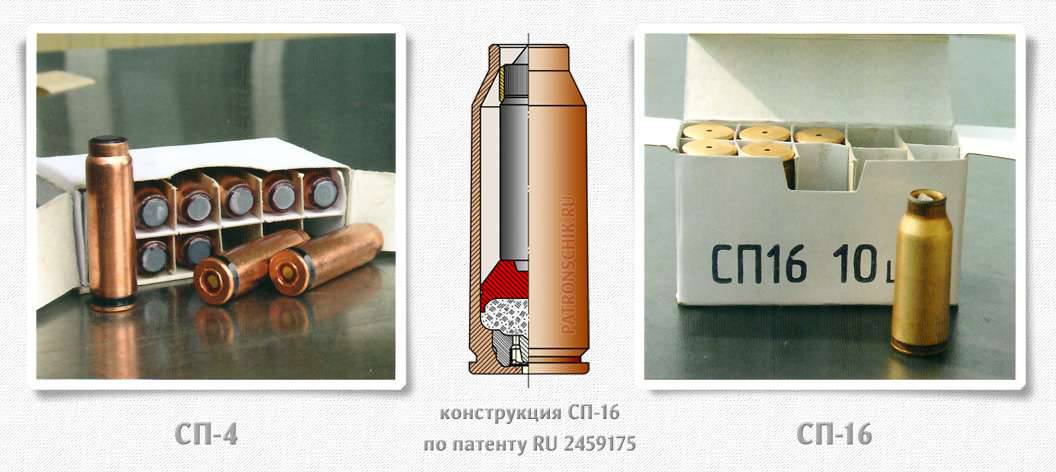
The design of the new 7,62-mm cartridge SP-16 was developed by Viktor Alekseevich Petrov just before his release on a well-deserved rest. The completion of work on this patron, as well as the adoption of the entire complex for service, he met already in retirement. The final development and introduction of the cartridge in the production involved Alexey Bagrov. The new cartridge SP-16 is one millimeter longer than its predecessor and wider in the outer diameter of the liner. The design of the bullet cartridge is changed. Its head, according to the RF patent 2459175, has the shape of a chisel for more effective penetration of protective compositions from Kevlar-type fabrics (to cut, rather than try to rinse them). The leading belt has been preserved on the pool. With an initial speed of 300 m / s. the bullet confidently penetrates the 2 class of the bulletproof vest (such as 6B2) and the 25-mm board behind it at a distance of 25 meters. The cap unit has changed significantly. In accordance with the new “energy industry” of the cartridge, both the pallet and the cartridge case have changed. Thus, using all the experience accumulated over many years in the development of such cartridges, as well as through new technical and technological solutions, our patrons managed to create a silent cartridge (!) That surpasses many “ordinary” regular pistol cartridges in its combat characteristics.
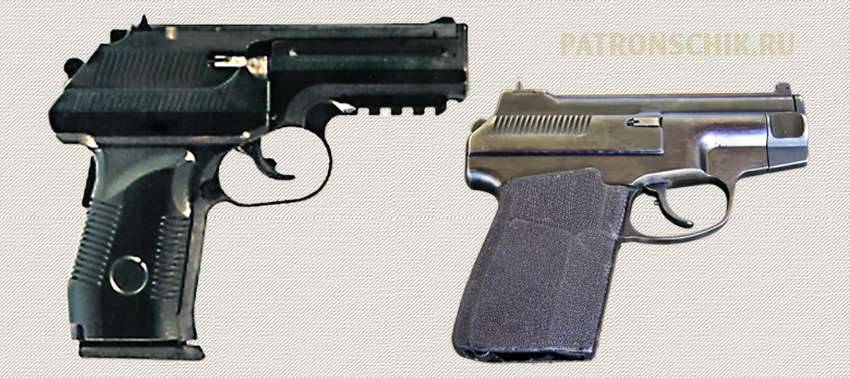
The PSS-2 pistol (left in the figure) is built according to the same concept as the PSS, with a movable bolt and chamber. But the gun has undergone significant refinement, which was conducted by V.M. Kabaev under the direct supervision of Peter Ivanovich Serdyukov. In the new pistol used trigger mechanism borrowed, mainly from Serdyukov pistol CP-1M and built on the principle of "ALWAYS ready to fire." Such a mechanism has two fuses (on the back of the handle and on the trigger) and provides the ability to open fire immediately by taking the pistol in hand and pressing the trigger. The use of such a scheme of operation of the fuses allows the gun owner to provide a significant advantage over the enemy in efficiency, especially in transient combat clashes. At the same time, of course, complete safety of using the pistol outside the combat position, that is, when wearing, storing, etc., is ensured. Also, the designers managed to eliminate one of the small MSS shortcomings — a wider than usual grip of the pistol grip, which caused some discomfort and comments. ” users. The new design feeds the next cartridge mechanism and the magazine (on the 6 cartridges) made it possible to make the handle of the PSS-2 in the usual dimensions.
The new gun weighs 1 kg (with a magazine, without cartridges), has a length of 195 mm, and an aimed range of 50 meters.
Thus, our designers created and in 2011, a significantly improved pistol complex for silent and flameless shooting, consisting of a PSS-2 pistol and SP-16 cartridge, was put into service.
About which is also absolutely true the assertion that it is unique in its kind and has no analogues.
In preparing this article the following materials were used:
* V.N. Noblemen. Book-3 "Modern domestic cartridges, how legends were created" (ISBN 978-5-9906267-3-7) monographs "Small arms ammunition" (ISBN 978-5-9906267-0-6). D'Solo Publishing House, Klimovsk, 2015;
* V.V. Korablin, under the general editorship of D.Yu. Semizorov. "TSNIITOCHMASH. 70 years in the science of armaments"; ISBN 978-5-9904090-2-6. A4 Publishing House LLC, Klimovsk, 2014;
* Magazine "Kalashnikov", №3 / 2006;
* Own drawings of the author;
* Materials free encyclopedia "Wikipedia";
* Materials encyclopedia of small arms world.guns.ru Maxim Popenker;
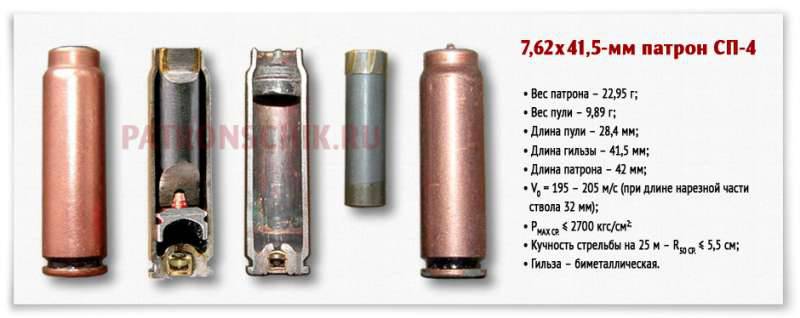
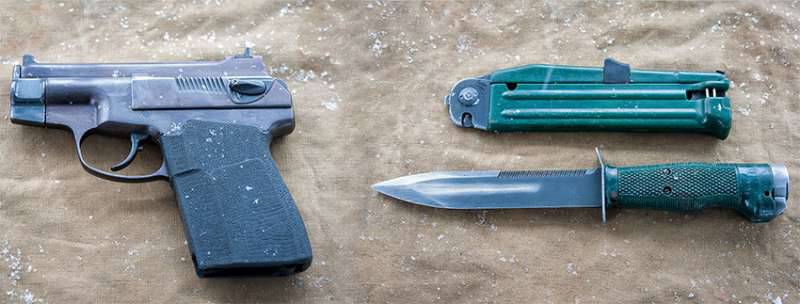

Information